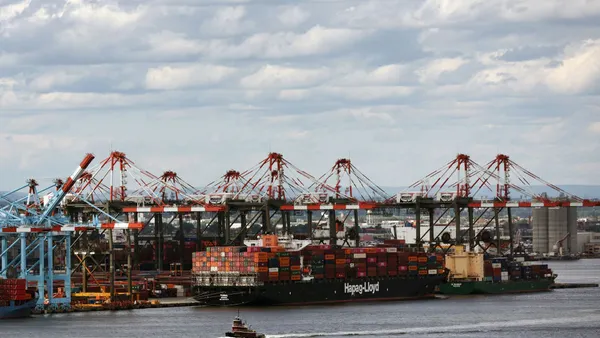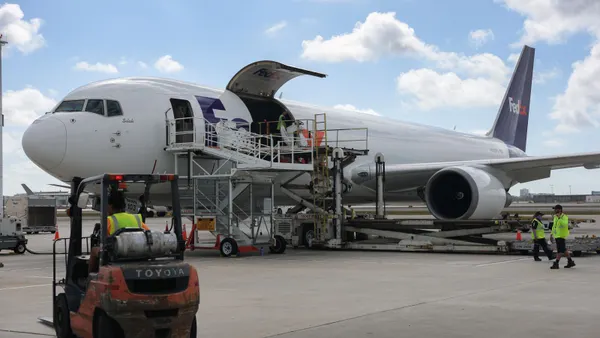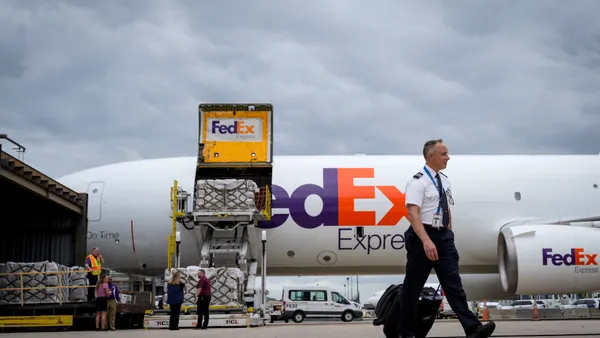Dive Brief:
- To make the biggest dent in carbon emissions, L'Oreal found that reducing reliance on air freight provides an outsized impact, said François-Régis Le Tourneau, L'Oreal's corporate supply chain standards and prospective director, at the APICS 2018 conference in Chicago.
- After analyzing its most used transportation modes, L'Oreal pledged to reduce emissions from its supply chain transportation 25% by 2030. Le Tourneau said the company has already converted to exclusively using trucks running on alternative fuels in Paris.
- The company will achieve its goal by adding sustainable transport to supplier selection criteria, reducing the use of air freight, transferring as much volume as possible to rail and sea freight and using alternative vehicles in cities.
Dive Insight:
L'Oreal has one of the most complex supply chains in the world — "We've benchmarked that" said François-Régis Le Tourneau, who named Nestle as one of the few companies out there with more complexity.
"We had roughly 50,000 SKUs five years ago. We are now at 70,000 SKUs worldwide. The complexity ... gives us an enormous challenge in order to be able to drive our sustainable footprint in the coming years," said Le Tourneau.
L'Oreal has pledged to decrease its overall environmental footprint by 60% by 2020 (based on a 2005 benchmark), and a lot of that work is going to come from decreasing carbon emissions in the supply chain. One way is by improving energy efficiency at L'Oreal's factories, distribution centers and offices.
But more difficult and much more impactful is decreasing emissions in the company's vast distribution network. A 20% reduction in emissions from transportation would yield 358,000 fewer tons of CO2 — compared to the 199,000 tons of fewer emissions that could be gleaned from reductions at facilities.
"At the beginning, we had the strong policy to reduce emissions and that was very nice, but you have to go into detail to find out how to trigger it. Where are the levers?" Le Tourneau said.
In analyzing the company's transportation networks, Le Tourneau found that 1% of product weight sent on L'Oreal's distribution network — namely air freight — emits 30% of the company's overall carbon emissions.
According to Le Tourneau, the company determined air freight produces 170 times the carbon emissions of sea freight and more than 25 times that of rail freight. Trucks and rail in some scenarios can be seen as nearly equivalent contributors, but smaller trucks and vans, frequently used to maneuver in crowded urban areas contribute the most carbon, second only to air freight.
"I would really recommend that you go into detail and analyze every factor, every element, for every country for every kind of relationships and kind of transportation that you have," advised Le Tourneau.
So how did L'Oreal adjust its supply chain? It shifted what volume it could to more sustainable forms of transport and doubled-down on efficiency and execution.
"Air freight is something to be avoided, but it's even worse when you have the wrong product at the wrong place and you destroy it afterward," said Le Tourneau, who said the company is well on its way to meeting its 2020 goals.
But he added that this analysis and the efforts to reduce emissions doesn't mean that the work is over.
"The progress we made in terms of emissions are not forever. Organizations sometimes regress. It's not easy to sustain," he said, explaining that the most important element making the upgrades to alternative fuels is internal buy-in.














